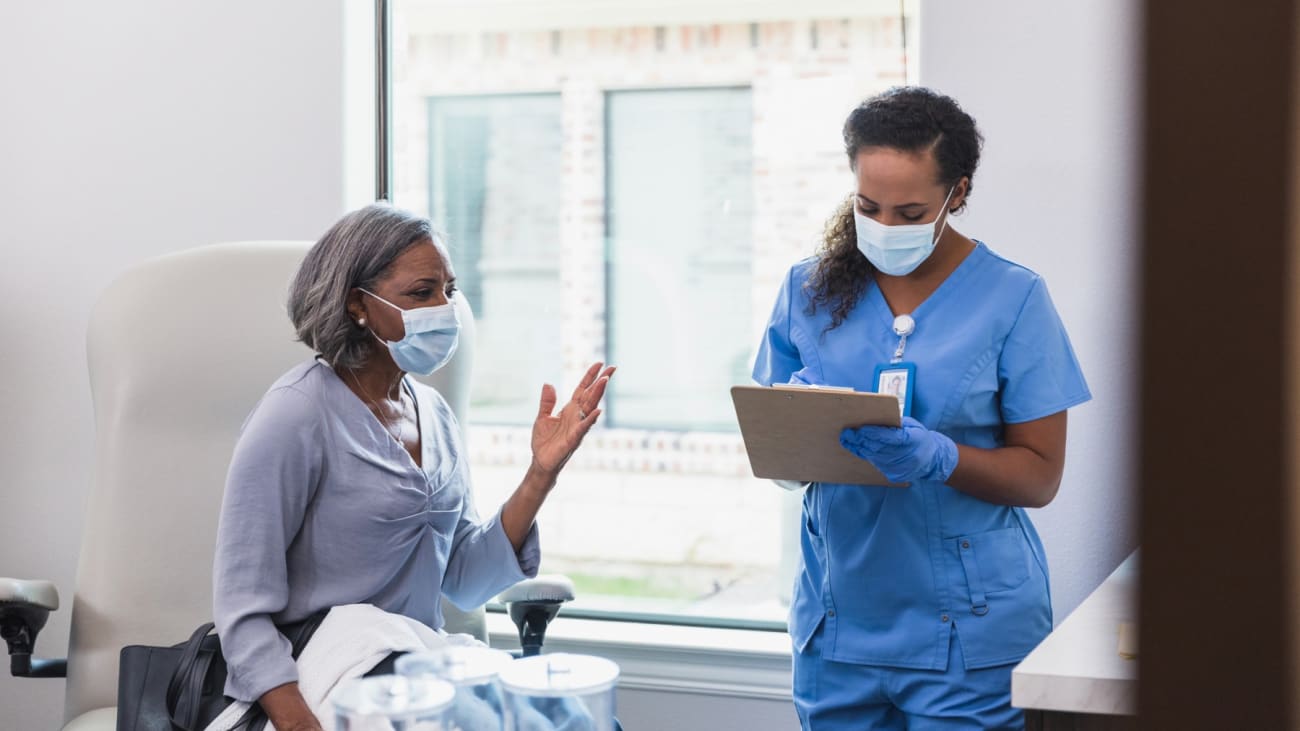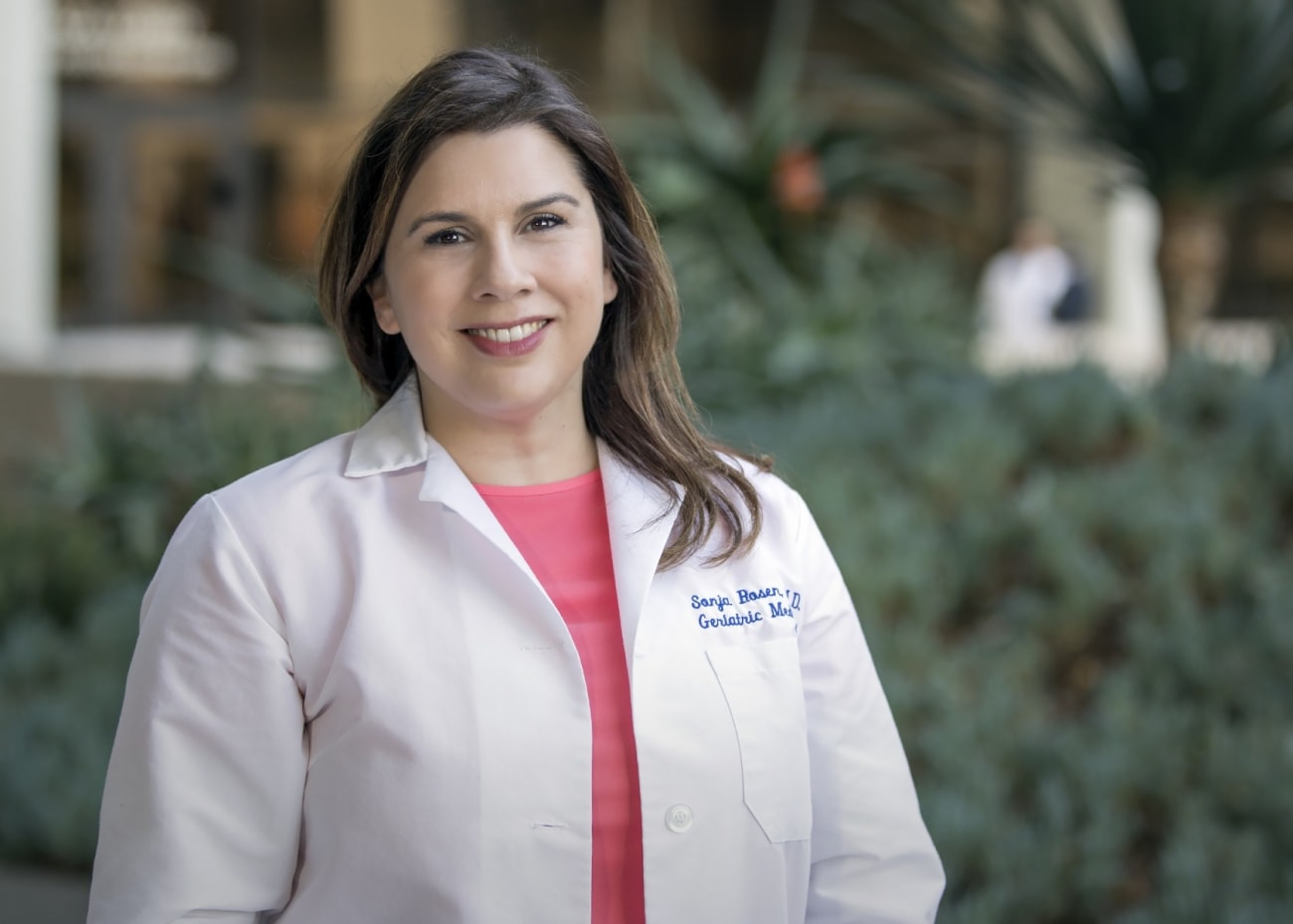

During Osteoporosis Awareness Month, At-Risk Adults Are Encouraged to Get Bone Density Checked and Falls Risk Assessed
Falls and broken bones are common among older adults, but they're not a natural part of aging. That's why Cedars-Sinai geriatricians created a bone health and falls risk consultation program to catch at-risk people before they break a bone or help them avoid another fracture in the future.

Sonja Rosen, MD
"Falling and breaking a bone can be catastrophic for an older adult. It can lead to a rapid decline in their health or even early death," said Sonja Rosen, MD, chief of Geriatric Medicine at Cedars-Sinai and a professor of Medicine. "To help prevent falls, we need to diagnose decreased bone density and osteoporosis and determine whether older adults are at risk for falling."
As the number of older adults in the U.S. grows, many are at risk of falling and fracturing a bone due to osteoporosis—a disease that develops when bone mass decreases, making bones brittle and weak. More than half of adults in the U.S. over age 50 have osteoporosis and low bone mass, according to a study published in the Journal of Bone and Mineral Research.
But many older adults are not evaluated for bone strength, Rosen said. In addition, people who have already suffered a fall or fracture often do not get the care or treatment they need. Patients who have experienced a fragility fracture—meaning they've fallen from a standing height—run a high risk of falling again and suffering another fracture, she said.

Geetha Rao, MD
To address that gap in diagnosis and care, the Cedars-Sinai Geriatrics Program offers bone health and falls risk assessments for older adults who are at high risk of falling and breaking a bone or who have already been hospitalized after falling and suffering a significant fracture.
"Many patients are scared of falling but don’t seek help because they think nothing can be done to avoid falls," said geriatrician Geetha Rao, MD. "But we do a comprehensive assessment looking at their function holistically, and we show them a number of ways they can take charge of their health."
To mark Osteoporosis Awareness Month this May, the Cedars-Sinai Newsroom spoke with Rosen and Rao about what to expect during a bone health and falls risk assessment and why they're critical for many older adults.
Who Needs an Assessment?
Anyone 65 and older who is at risk of falling or worried about it, or who has already fallen should get a bone health and falls risk assessment, Rosen said. Risk factors include difficulty with walking and balance, lower body weakness, vitamin D deficiency, vision problems, and use of medications that affect steadiness.
Patients in the community sometimes ask for an evaluation. Others are referred through their primary care physicians or the Cedars-Sinai Geriatric Fracture Program, an effort led by the Department of Orthopaedics to improve care for older patients hospitalized with a broken bone and help them avoid a similar break in the future.
Falling becomes more common as people age because older adults tend to have more medical issues and take more medications that make it more likely they will fall. "If someone is falling, they need to visit a doctor and figure out the root cause," Rao said. "A lot of times it's complicated and not just one issue."
What Happens During the Appointment?
A bone health and falls risk assessment is designed to diagnose decreased bone density or osteoporosis and determine the likelihood that someone will fall and fracture a bone.
In keeping with Cedars-Sinai's designation as an Age-Friendly Health System—Committed to Care Excellence, the geriatric care team ensures that the patient's assessment takes into account what matters most to them, their mobility, using medications that don't interfere with their broader goals, and preventing or dealing with dementia, depression and delirium.
"Mobility is strongly linked to independence in an older person," Rao explained. "The ability do a simple task such as walking and going to the bathroom is vital to living independently. We want to help patients to live on their own safely for as long as possible."
Bone Health Assessment
- Bone Density Scan: The geriatrician reviews prior specialized X-rays—commonly called DEXA scans—which reveal bone density that's scored by number to assess the degree of bone loss. The patient and physician discuss whether a new scan is needed and, if so, place an order for a future visit with a radiologist.
- Fracture Risk Assessment Score: A patient's height, weight, other characteristics and their DEXA scan score are used to determine their 10-year risk of developing a major fracture, also called a FRAX score.
- Bone Health Medications: The geriatrician discusses with the patient potentially prescribing new bone health medications, such as Fosamax.
Falls Risk Assessment
- Detailed Falls History: If the patient has fallen in the past, the care team uncovers more details about the fall, including the time of day, associated symptoms (dizziness), what the patient was doing when they fell and any safety issues in their environment.
- Medication Review: Geriatricians try to deprescribe medications with side effects that can contribute to falls. These include medications that can cause dizziness and confusion, such as narcotics, benzodiazepines or antihistamines. Cardiac medications are carefully reviewed because too high a dose of blood pressure medications can lead to falls.
- Screening for Hidden Health Issues: During the appointment, the patient's blood pressure is checked while lying, sitting and standing. Low blood pressure can contribute to falls and sometimes is caused by dehydration. Diabetes also can cause a drop in blood pressure upon standing as well as decreased sensation in the feet, which can lead to falls. Staff members also check the patient's vision and look for signs of strokes, Parkinson’s disease, dementia, pneumonia and urinary tract infection—all of which are associated with falls.
- Gait and Balance Screening: Staff members time the patient as they stand up from a chair, walk 10 feet away, come back and sit down at a normal pace. If the test takes longer than 12 seconds to complete, the patient might be at an increased risk of falling. Staff members also discuss the potential need for a cane, walker or other assistive device, and whether the patient might benefit from an exercise program or referral to physical therapy. They give the patient a home fall-prevention checklist as well.
- Functional Assessment: Staff members determine how the patient is managing activities of daily living, such as bathing, dressing, shopping and paying bills.
For more information, visit the Cedars-Sinai Geriatrics Program online or call the office at 310-385-3511.
Read more on the Cedars-Sinai Blog: 5 Things to Know About Senior Health
